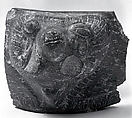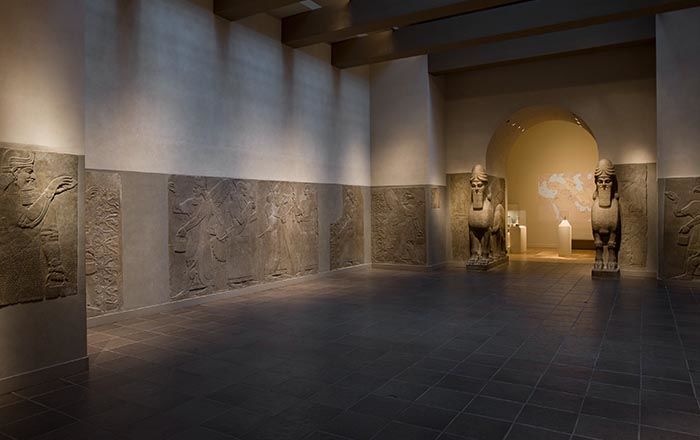Bowl fragment with the head of a ram
Not on view
This bowl fragment features the head of a stylized ram. The ram has a pointed snout, lentoid eyes with incised pupils, and horns with incised lines that form a heart shape around the ram’s face. The fragment is made of bitumen, an asphalt-like substance that occurs naturally in the Near East. Mixed with ground calcite and quartz it forms a hard, gray substance which can be shaped like clay.
This fragment was excavated at Susa in southwestern Iran, the capital of the ancient Elamite kingdom. While bitumen was used elsewhere in the Near East, beginning in the third millennium BCE the Elamites developed an especially sophisticated recipe for bitumen compound, which they used to make a range of vessels, most decorated with animal foreparts, as well as other objects, a practice which continued into the first millennium BCE.
This image cannot be enlarged, viewed at full screen, or downloaded.

